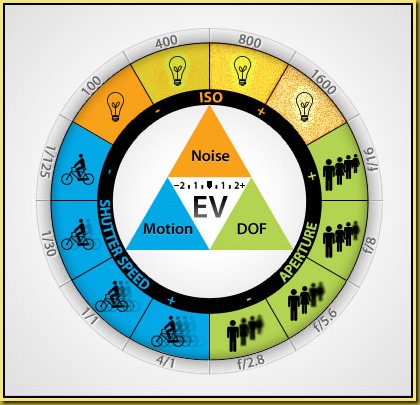The five main ‘problems’ with smartphone cameras: No. 1
Being a somewhat proficient taker of pictures and having owned an SLR style camera since I was 16—my first being the amazing and award winning Pentax Spotmatic II—I often find myself getting dragged into the argument of modern smartphone cameras versus real cameras. There are lot of people now, generally people under about 30, who think that modern smartphone cameras are as good as an SLR, or these days, a DSLR.
I tend to find myself trying to explain to people, who don’t really understand (or want to understand) what I am trying to tell them, why a smartphone camera does not come within a country mile (which —as a rule-of-thumb—is about 20 percent longer than a city mile) of a bottom-end DSLR. Even though I try to avoid getting caught up in such discussions I somehow find that I get drawn in. I just can’t resist for some reason.
Driving back from work this week, which is a full two hour drive (which means it takes a little over two hours), I was mulling over what would be the main factors that differentiate smartphone cameras from a real camera.
As each one of the factors I want to document takes a lot of words this will probably take a few postings to get through, but here is the first significant differentiating factor that I came up with.
(1) Aperture: The primary exposure setting factor
The three critical factors impacting the exposure of a photograph are:
- The amount of time that light from the lenses is allowed to ‘flash’ onto the sensor. The term generally used for this is ‘shutter speed’.
- The sensitivity of the image sensor to light. This is typically referred to as the ISO or the sensor speed.
- The amount of light the lens allows through the glass onto the sensor. This is the aperture. Aperture also affects the depth-of-field (DoF), which is the the depth of the focus zone.

I did a quick Google search and found the picture at right at a site called PetaPixel [click the image to go to the page at PetaPixel]. This sort of shows my triangle even if they don’t have aperture at the top.
PetaPixel refers to another site called ExposureGuide (here) that gives a great run down on the three exposure factors.
The vast majority of non-sports photographers use the aperture setting as their main exposure reference. They pick and set the aperture as the first and most important factor to set (which is generally referred to as ‘aperture priority’ photography), and then they vary the shutter speed and ISO around the aperture. But on a smartphone you cannot set the aperture.
Smartphones don’t have an aperture. Well they do; the light can get through the lens to the sensor, but you have no control over the aperture. The aperture is fixed when the phone is made. It can’t be adjusted. Hence you can’t vary the DoF or the amount of light the lens lets through to the sensor.
The aperture on your smartphone camera will be fixed at something between f1.8 and f4. Modern flagship smartphones (those released in the last 12 months) will be closer to f2. As any real photographers scanning this will know, f2 or wider is going to give you a very shallow DoF. Even after adjusting for the small sensor the DoF is still going to be relatively shallow.
This is the reason most ‘close-up’ pictures with smarphones (such as ‘selfies’) almost always appear out of focus. The combined affect of close focus plus a wide aperture means that the DoF is shallow. At arms length with an f2 smartphone the DoF is going to be around 6”. Anything in front of or behind the plane of focus outside of this 6” DoF zone is going to start going out of focus. And this assumes you managed to get the focus point on your face somewhere in the first place—which can be hard to determine when you hold the camera at arms length.
However this wide fixed aperture does allow for pictures to be taken in relatively low light without the flash—which is good, because the flash on most smartphones is pretty useless.
So the camera in a smartphone has to make all its optical exposure adjustments by only varying two of the three critical exposure factors from the triangle: the shutter speed and the ISO of the sensor.
It is possible that smartphone manufacturers might find a way to incorporate aperture control into their cameras in future models. Nokia, currently the far and away leaders in smartphone camera technology, filed patents in 2013 for variable aperture technology. However it could be well over a year before this can be converted to something that works and will fit into a smartphone. Even then the aperture range is likely to be only about three f-stops. But even this would be better then no aperture control at all.
And if Nokia are working on ideas for incorporating aperture control into smartphone cameras then you can bet your favourite lens that Samsung and Apple are working on something as well.
For my next differentiator I will dribble on about is the lens, or to be more precise, why you really should not take ‘selfies’ with a smartphone camera held at arms length.

